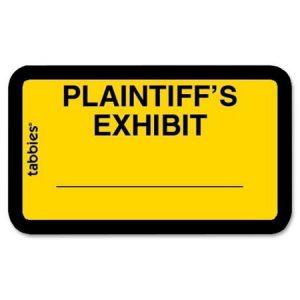PRESERVING EVIDENCE WITH A SPOLIATION LETTER
 Immediately after an injury, it is important to collect and preserve all the evidence you will need to prove your case. Trials can be lost because of a lack of evidence. Sometimes, a judge deciding liability may need to know where the cars came to rest, what the property damage looked like, or what the dashcam footage revealed. Sometimes that evidence is in the hands of another person, corporation, or governmental entity.
Immediately after an injury, it is important to collect and preserve all the evidence you will need to prove your case. Trials can be lost because of a lack of evidence. Sometimes, a judge deciding liability may need to know where the cars came to rest, what the property damage looked like, or what the dashcam footage revealed. Sometimes that evidence is in the hands of another person, corporation, or governmental entity.
Enter the spoliation letter. This is the singularly most important step in evidence preservation. Without it, it is possible, even likely, that the evidence you need will be destroyed, often in the normal course of business. Security tapes are routinely recorded over every day, week, or month. Documents and photographs may be destroyed when they serve no further use. But a proper spoliation letter can not only help to ensure that evidence remains available, but when sent to a future defendant, it can help you in other ways if the evidence is destroyed. For example, a judge may rule that if evidence destroyed after the receipt of a proper spoliation letter, the jury can infer that the evidence was harmful to the destroyer’s case.
So, make sure that your spoliation letter (or your lawyer’s spoliation letter) is sent by some mechanism to ensure you can prove it was sent–a fax, an email, hand-delivery with a date-stamped copy, or a certified letter with return receipt requested is usually a good start.
What would a spoliation letter include: Here is are some things we requested in a recent slip-and-fall case:
Dear Sir/Madam:
Our firm represents John Doe in a claim for personal injuries on January 1, 2018 against your company. As you know, Mr. Doe was a guest in your grocery store around 11:00 p.m. when he slipped and fell on ice and water near the bagged ice freezer at the front of your store. Your employees helped move him to the side, and he was taken by ambulance to the hospital where he was diagnosed with a broken leg.
We request that you preserve all evidence related to Mr. Doe’s fall and the conditions of the store immediately before and after that fall. In particular, please identify and save all information, documents and photographs, including but not limited to the following materials:
- All receipts, store savings card data, credit and/or debit information reflecting any purchases made by Mr. Doe at your store on January 1, 2018;
- Any photo or video surveillance footage from inside and outside the store on January 1, 2018;
- All cleaning logs or “sweep logs,” by whatever name called, used in the store for January 1, 2018;
- All maintenance or repair requests, letters, invoices, payments, or logs pertaining to the freezer used to store bags of ice for the period of January 1, 2017 to the present;
- All lists, schedules and rosters reflecting employees of your store who working on January 1, 2018; and
- All documents reflecting the delivery of bagged ice to your store from December 25, 2017 to January 1, 2018, including company of origin, invoices and receipts.
Thank you. Please note that your failure to preserve any of this evidence may be used against you in trial, and may result in a spoliation instruction.
Be sure to follow-up with someone in authority to ensure that the letter has been received and proper measures are taken. Then, if they will not send the documents to you, file a lawsuit and get them through the written discovery process.
 Maryland Car Accident Lawyer Blog
Maryland Car Accident Lawyer Blog

